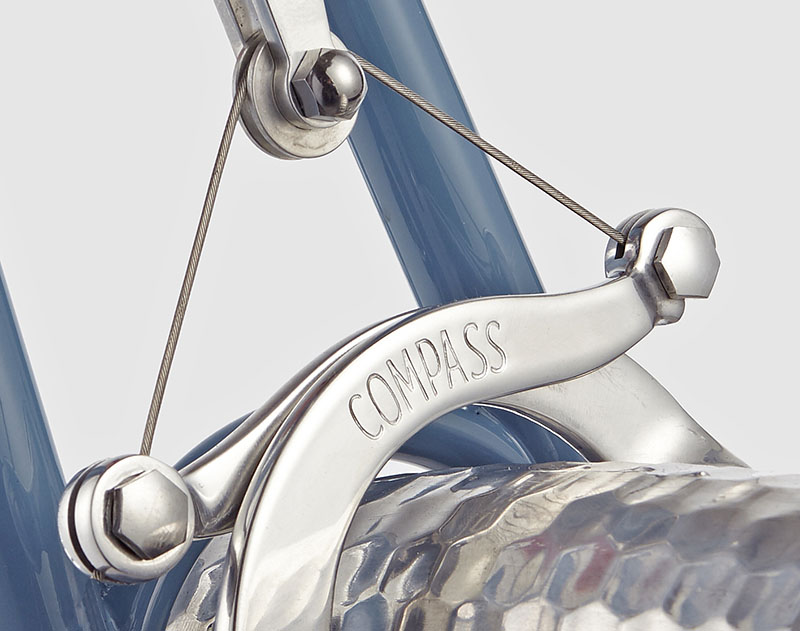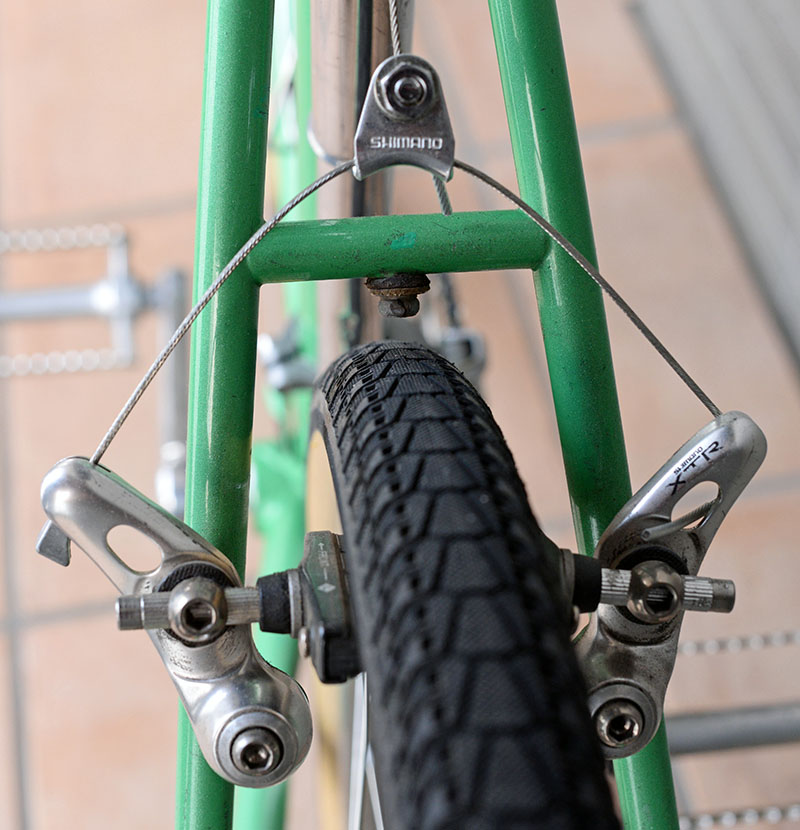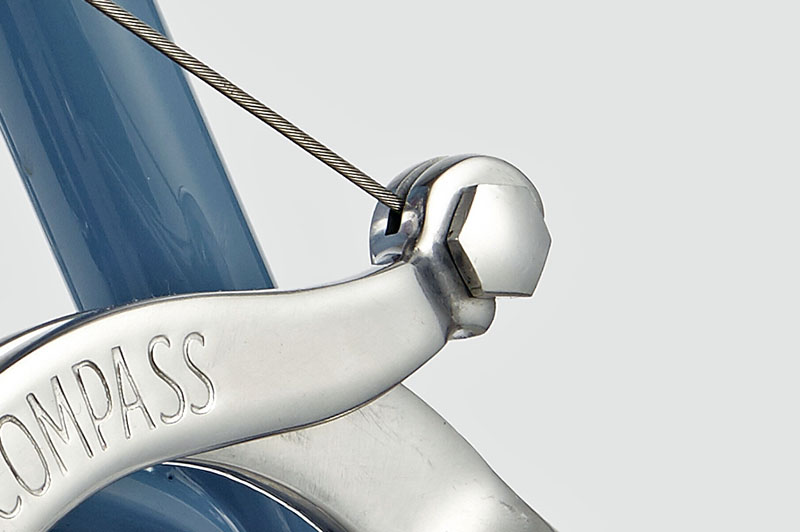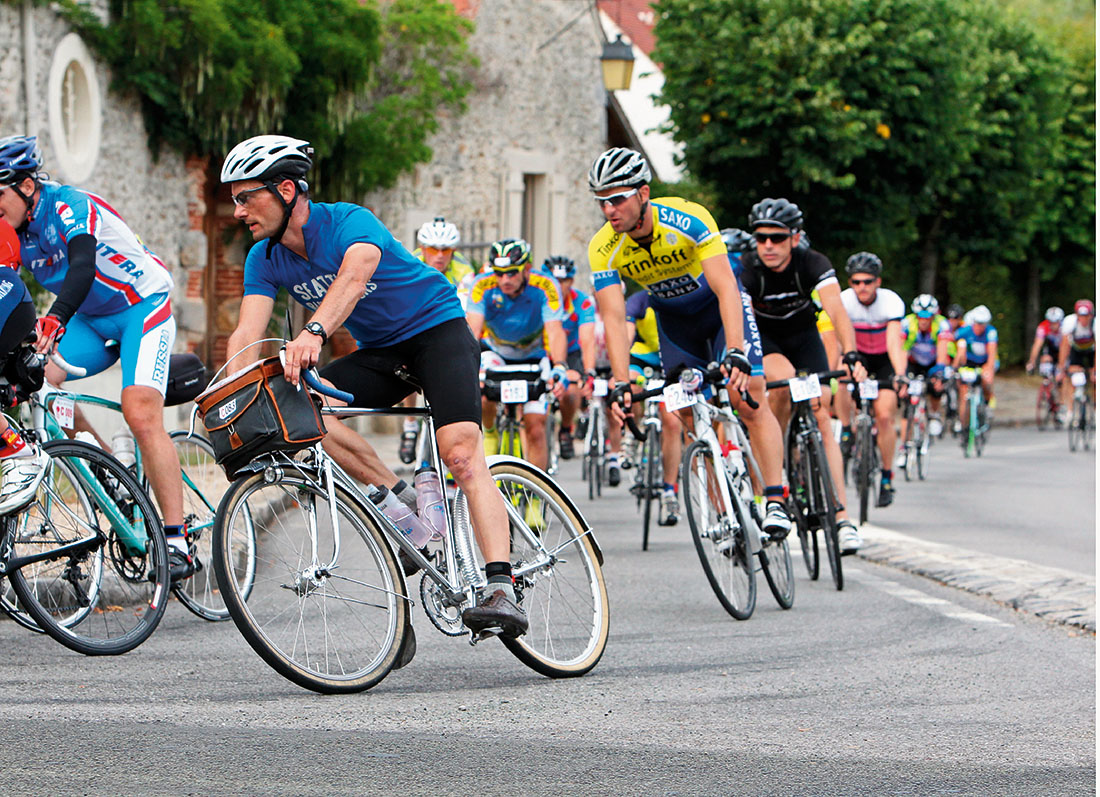Straddle Cables Done Right

Straddle cables provide a light and elegant way of transferring the brake force: Every cable-actuated rim brake needs to transmit the force of the single brake cable onto two brake pads that squeeze the rim.
In recent years, straddle cables been replaced by direct-action V-brakes or complex linkages (on modern Shimano sidepull brakes). There are reasons for this: Current practice for straddle cables is less than optimal. However, these flaws can be eliminated with good design, resulting in brakes that are lighter and more powerful than the alternatives.

Above is a typical straddle cable arrangement. The straddle cable is as thick as the brake cable, and that makes it very springy. You can see how it bends around the cable hanger in a gentle arc. When you apply the brake, you first have to straighten the straddle cable. This is lost motion – you pull on the brake lever, but you don’t get any brake power yet. If there is too much “lost motion”, you risk bottoming out your brake levers against the handlebars. To prevent this, you have to set your brake pads very close to the rims. Experienced mechanics “pre-bend” the straddle cable, so it better conforms to the cable hanger, but it’s always going to have some of that springiness.
Why is the straddle cable so thick and springy? It carries only roughly half the load of the brake cable, so it needs to be only half as strong. A thinner cable is less springy and conforms much better to the bend of the cable hanger. The top photo shows our Compass brakes, which use a thin shifter cable as the straddle cable. You can see how straight the cable runs. When you squeeze the brake lever, there is no lost motion.
There is a reason to use a thicker straddle cable: to prevent it from fraying where it clamps to the brake arms. The angle of the cable changes here as you apply the brakes: The cable becomes more vertical as the hanger moves upward and the brake arms move inward.
If the cable is clamped firmly to the brake arms, you bend the cable every time you brake, which eventually may cause it to fray. The angle change is more severe on centerpull brakes than on cantilevers. And when the cable frays, it’s only a matter of time until it breaks, and then you lose all brake power.

There is a better solution to this problem: cable attachments that swivel. Then the changes in angle don’t bend and stress the cable at all. You can use a thin straddle cable, which doesn’t “spring”, and you’ve eliminated all the disadvantages of straddle cables, while keeping their advantages.

With optimized straddle cables, our Compass brakes work effectively the same way as Shimano’s latest racing sidepulls – the two pivots are next to the tire, and the lower arms are short to offer great braking power. Yet the Compass brakes use straddle cables instead of complex linkages, so they are much lighter than Shimano’s racing brakes, and they have less friction. When you use them on the road, you can feel the difference.
Click here to find out more about Compass brakes.
Photo credit (PBP photo): Maindru, used with permission.


